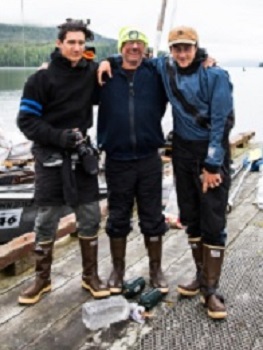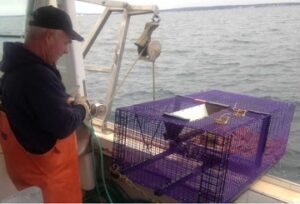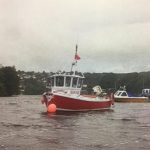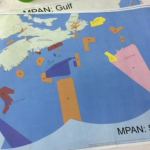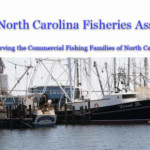Tag Archives: halibut
Navigating Alaska’s stormy seas
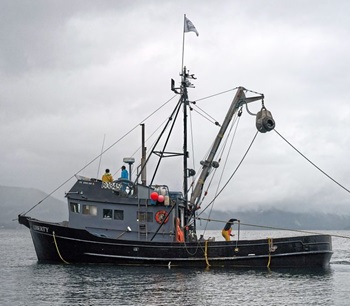 Norwegian fishermen settled in Petersburg in the 1800s, drawn to its ideal location for pursuing salmon, crab and halibut. Today, hundreds of vessels dock there, selling their catch to the town’s two major processors. These processors head and gut the fish before canning or freezing them for the journey to dinner tables across the world. One of these plants, built over a century ago, is the town’s largest private employer. Few know the industry better than Glorianne Wollen, a fisherman’s daughter who operates a large crab boat and serves as harbourmaster. From her small office, she has witnessed significant change over the years. “In the good old days, the town was alive with discussion,” Wollen recalls. “Everybody had a stake, everybody knew what was going on, and things happened in real-time.” That energy faded as boats grew larger and more efficient, requiring fewer crew members and leading to a more detached industry. Last year, however, the industry faced a crisis that even seasoned veterans struggled to recall. Photos, more, >>CLICK TO READ<< 16;20
Norwegian fishermen settled in Petersburg in the 1800s, drawn to its ideal location for pursuing salmon, crab and halibut. Today, hundreds of vessels dock there, selling their catch to the town’s two major processors. These processors head and gut the fish before canning or freezing them for the journey to dinner tables across the world. One of these plants, built over a century ago, is the town’s largest private employer. Few know the industry better than Glorianne Wollen, a fisherman’s daughter who operates a large crab boat and serves as harbourmaster. From her small office, she has witnessed significant change over the years. “In the good old days, the town was alive with discussion,” Wollen recalls. “Everybody had a stake, everybody knew what was going on, and things happened in real-time.” That energy faded as boats grew larger and more efficient, requiring fewer crew members and leading to a more detached industry. Last year, however, the industry faced a crisis that even seasoned veterans struggled to recall. Photos, more, >>CLICK TO READ<< 16;20
Cancelation of California salmon season forces fishermen to find new way forward
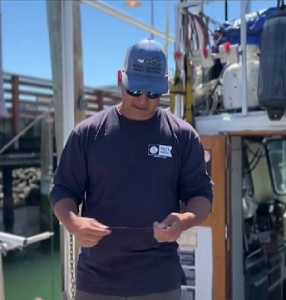 Salmon fishers across the state are pivoting to stay afloat after the salmon fishing season was canceled earlier this year. At dock 47 in San Francisco, the pier looks different this time of year. More boats are tied up, an unusual sight for what would be peak salmon season. Matt Juanes is preparing to head out to sea. He readies his lines and hopes for a big catch. For now, it’s all he can do. “My goal is to catch every last one of them,” he said aboard his boat Plumeria. But this year, the salmon fisher of 8 years is exploring uncharted territory for him. He’s now looking to catch shrimp and halibut after salmon season was canceled for repopulation efforts. Video, >click to read< 09:03
Salmon fishers across the state are pivoting to stay afloat after the salmon fishing season was canceled earlier this year. At dock 47 in San Francisco, the pier looks different this time of year. More boats are tied up, an unusual sight for what would be peak salmon season. Matt Juanes is preparing to head out to sea. He readies his lines and hopes for a big catch. For now, it’s all he can do. “My goal is to catch every last one of them,” he said aboard his boat Plumeria. But this year, the salmon fisher of 8 years is exploring uncharted territory for him. He’s now looking to catch shrimp and halibut after salmon season was canceled for repopulation efforts. Video, >click to read< 09:03
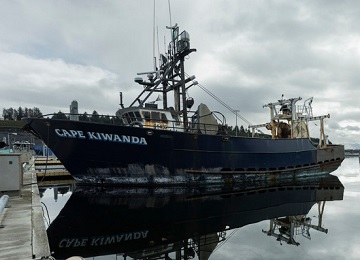
In Depth: Alaska’s Fisheries Are Collapsing. This Congresswoman Is Taking on the Industry She Says Is to Blame.
The late 1990s and early 2000s were boomtimes for halibut fishermen in Alaska. Over 80 million pounds of the flatfish were being harvested annually. Deckhands could earn $250,000 a season. The small boat harbor in the southcentral city of Homer, known as the “halibut capital of the world,” was bustling. Erik Velsko, 39, was one of those fishermen. He started buying annual shares in 2001 when the halibut population was at near historic highs. But within a few years, the stock plummeted by more than half and the quotas for commercial fishermen were slashed accordingly. Halibut wasn’t the only so-called directed fishery to experience such a catastrophic drop. The crab fleet — made famous in the reality show “Deadliest Catch” — has been mostly stuck in port for two years after the near total collapse of the snow crab population and the decades long decline of red king crab. Photos, >click to read< 11:42
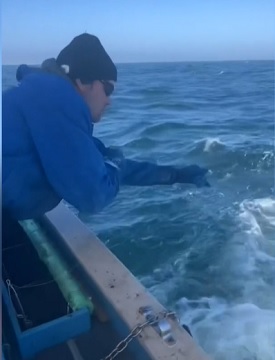
Sustainable fishing off the coast of SoCal
For Ben Hyman, fishing along the California coast is a way of life. He’s been a commercial fisherman for 25 years. “I’ve always been addicted to fishing and loved fishing and grew up surfing, and for a lot of us, it’s just a natural evolution to start wanting to be on the boat and start fishing more,” Hyman said. He opened his own business, the Wild Local Seafood Co., 25 years ago and focuses on selling locally caught seafood such as salmon, halibut, ahi, crab and much more. Video, >click to watch/read< 16:57
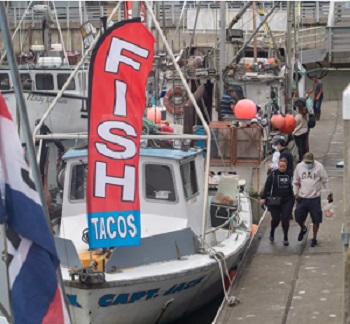
Locally sourced seafood attracting crowds to the fishing boats in Half Moon Bay
Commercial trawlers pan for bottom-feeders at least three miles from shore. Purse-seiners use nets closer to the surface, while traditionalists fish the way the Egyptians did with hooks and lines. Nothing causes a bigger commotion than Dungeness crab in late fall, when eager customers line the docks like going to the DMV. The crustacean has joined turkeys as a Bay Area staple of the holiday dinner table. “All the crab pots are like little money banks that you just pull up and dump out the money,” Hassan said. Weekend dock sales have become integral to survival for anglers like Hassan. Smaller boats don’t catch enough to supply wholesalers, so they bypass the supply chain for direct sales. >click to read< 13:31
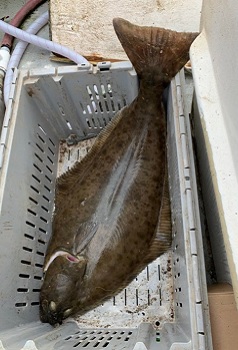
Hallelujah, time for halibut, with a nice recipe, too!
My husband fishes with Captain Joe Brewer aboard the boat Hey Jude II. A traditional lobster boat, this fishing vessel is rigged with lines and hooks every May to “hook” for halibut. On May 18, opening day of Maine halibut season, they were fortunate to land a 45-inch, 34-pound, delicious flatfish from the family of right-eyed flounders.,, Halibut is delicious baked, broiled, poached and grilled. We particularly enjoy it marinated and grilled, with a salad of freshly harvested spring greens. The recipe for Romagna Grilled Halibut is adapted from Marcella Hazan’s “Essentials of Classic Italian Cooking.” >click to read< 12:52
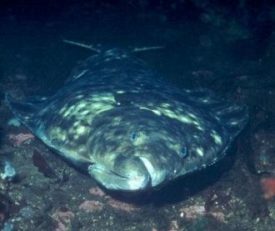
Halibut catch limits soar for Central Gulf fishermen
The International Pacific Halibut Commission (IPHC) completed its 97th Annual Meeting in Seattle, Washington, on Friday (Jan. 29), with decisions on total halibut mortality, fishery limits, fishing dates, and other fishery regulation changes for the upcoming season… The 2021 Pacific Halibut commercial fishery catch limits went up significantly for fishermen in the regulatory Area 3A, the Central Gulf of Alaska, with a 26.95-percent increase from just over 7-million pounds available in 2020, to nearly 9-million pounds this year. All other areas but two saw an increase in poundage from last year. Canadian fishermen in Area 2B get a two-percent increase, equivalent to 11,000 pounds. >click to read< 17:26
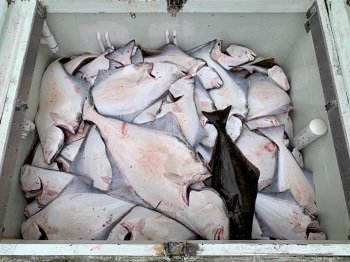
NOAA Fisheries reports on early pandemic impact on fisheries
NOAA Fisheries Friday, January 15 released a report on the economic impact on the seafood catch and recreational fishing nationwide and here in Alaska through last summer.,, Nationwide the commercial fishing industry started off 2020 with increases in revenue from seafood sales. But as the pandemic hit in March, that income dropped off 19 percent compared to the most recent five-year average. Those declines swelled to 45 percent by July. >click to read< 19:25

Some bright spots for high-value salmon, halibut in 2021
Following the trend of the last several years, the salmon forecast for the 2021 salmon season in Bristol Bay looks positive. The Alaska Department of Fish and Game is forecasting a total return of about 51 million sockeye salmon, with an inshore run of about 50 million. That’s about 6 percent better than the average for the last decade and 45 percent greater than the long-term average.,, Halibut outlook – Stock numbers in the Pacific halibut fishery are overall still declining, but there are individual bright spots in some regions. >click to read< 10:43

Bush Caucus urges reduction in halibut bycatch caps
Five members of the Alaska Legislature’s Bush Caucus have asked Alaska Department of Fish and Game Commissioner Doug Vincent-Lang to advocate for a reduction of halibut bycatch caps during the virtual North Pacific Fishery Management Council now underway. “Millions of pounds of halibut are discarded as bycatch every year,”,,, The Bush caucus noted that halibut fishermen lose a portion of their annual allocation of halibut every year due to the currently high bycatch caps. >click to read< 08:27
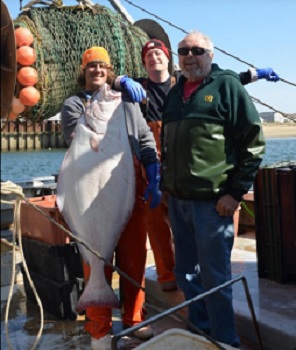
‘Amazing’ halibut, one of the largest fish in the Gulf of Maine, are making a comeback
Halibut are one of the largest fish in the Gulf of Maine, second only to bluefin tuna, swordfish and large sharks. Historically they were a mainstay of the fishing industry along with cod. The National Marine Fishery Service began regulating the halibut fishery in the 1990s and there is a one fish per trip per boat limit on catch. This has been a boon to their rebound. This past spring while fishing for haddock my husband, David, caught four huge halibut. They ranged in size from 40 to 60 pounds. In the past, he has caught one or two a year which were large enough to be legal to keep. The current minimum size is 41 inches. My husband caught two halibut near Jeffrey’s ledge in the mid-1990s which weighed 120 to 140 pounds.,, but David has noticed a strange thing about halibut, they seem to swim in pairs. >click to read< 15:29
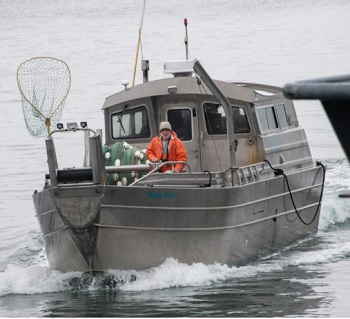
NPFMC meets online to resolve halibut issues
Federal fisheries managers met online in mid-May to approve emergency action necessitated by the impact of the novel coronavirus,, The session, announced in late April, allowed for harvests, processors and other fishing industry entities until one day in advance of the May 15 meeting to submit written comments through links on the North Pacific Fishery Management Council’s agenda on five emergency requests. Those requests ranged from allowing all holders of individual fishing quota to make temporary transfers of that quota to eligible hired masters during the pandemic to increasing IFQ end-of-year rollover provisions. The council approved the transfer for the rest of the 2020 season for quota shares owned by all halibut and sablefish IFQ holders, based on a request from 11 industry leaders. The council also recommended to the International Pacific Halibut Commission, a request from the halibut charter industry,,,>click to read< 18:34

Central Gulf of Alaska halibut catch limit cut
Halibut catch limits for 2020 have been trimmed overall by seven percent by the International Pacific Halibut Commission, with the Central Gulf of Alaska, Area 3A, allocated a harvest of 7.05 million pounds, down 12.53 percent from 8.06 million pounds in 2019. The largest area percentage cut was for Area CDE, the Bering Sea, where the quota was cut 15.20 percent, from 2.04 million pounds to 1.73 million pounds. Area 4A, in the Aleutians, likewise received a 14.55 percent cut, from 1.65 million pounds in 2019 to 1.41 million pounds for 2020. >click to read< 12:03
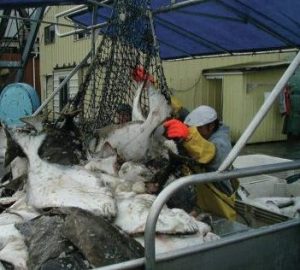
Halibut bycatch increases as council considers cod options
Data released preceding the International Pacific Halibut Commission’s upcoming interim meeting shows that almost all the regulatory areas of Alaska from Southeast to the Bering Sea — areas 2C through 4E, respectively — caught more halibut as bycatch in the 2019 season than they did in 2018, with the exception of area 4B, which covers the western Aleutian Islands. Coastwide, from California and British Columbia through the Bering Sea, bycatch increased by more than 1.5 million pounds,,, >click to read< 15:48
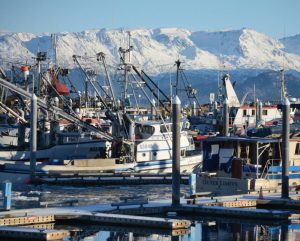
Alaska: Seafood industry faces more uncertainty
As another year draws to a close, the seafood industry seems to be facing even more uncertainty than usual, with some groundfish stocks cratering, salmon runs behaving in historically strange ways, trade wars with China imposing some tariffs on a variety of products, and the state being on the forefront of climate change. The year started out with a Pacific cod quota cut of 80 percent in the Gulf of Alaska, an unexpected drop after a strong year class from 2012 suffered unusually high mortality due to a warm period from 2014 to 2016.,, Bering Sea crabbers started the year with a 19.5 million-pound opilio quota that proved difficult for some boats, >click to read<09:30
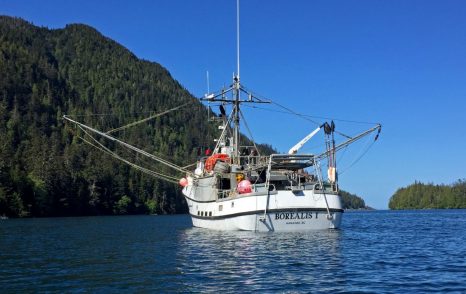
Why Does Halibut Cost So Much?
Dishes fly across the galley. Water gushes through the scuppers and onto the deck. Five crew members on the 17.5-meter commercial halibut boat Borealis I walk like drunkards, holding onto anything stable. “We’re going to get bounced around a bit,” Dave Boyes, the boat’s captain and owner, deadpans. My day started at first light, about six hours ago, watching the crew let out 2,200 galvanized circle hooks laced with chunks of pollock, squid, and pink salmon to soak across 13 kilometers of ocean bottom. Then, we ate breakfast and rested in cramped, cluttered bunks while the boat bounced on 1.5-meter waves and—below, in the cold unseen depths—the hooks sunk deep into the lips of the predatory halibut. Now, the crew readies for battle, cinching rubber rain gear and running crude gutting knives across electric sharpeners—a portent of the bloodshed to come. When Boyes toots the boat’s horn, it’s game on. >click to read<08:45

Survey again shows drop in halibut stocks in Gulf of Alaska
The 2018 stock status report presented to the International Pacific Halibut Commission at its interim meeting on Nov. 27 shows yet another drop in the biomass of Pacific halibut in the North Pacific — about 7 percent down from the 2017 fishery-independent setline survey. That doesn’t mean every single region dropped, as it’s an average, but Alaska’s three main areas of effort — 2C, the entirety of Region 3, and Region 4 excluding the western Aleutian Islands — all dropped. The most significant drop was in Area 2, which stretches from northern California to Southeast, falling 15 percent. Region 3, which stretches across the Gulf of Alaska out to the Alaska Peninsula, fell 7 percent. >click to read<20:19

Halibut catches light so far
As of Wednesday, 27.7 per cent of Prince Edward Island’s 2018 halibut quota had been landed. The fishery has been open on Wednesday and Thursday s for the last three weeks. It closes after today and will reopen in three weeks’ time, again running on three consecutive Wednesday and Thursdays.Michel MacDonald, co-chair of the P.E.I. Fishermen’s Association’s Groundfish Advisory committee describes the fishery in the eastern end of the Island as being slow, so far. >click to read<20:30
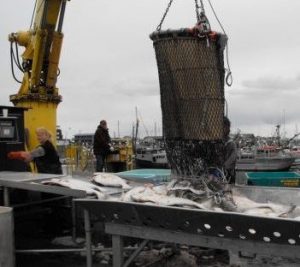
Alaska – Halibut dock prices rebound, but upswing may not last
Halibut prices fell about $2 per pound at the beginning of the season. But there’s good news for some fishermen: ex-vessel prices are increasing slightly around the state. “We did see the ex-vessel price for halibut perk up a bit where we’re at $6.25, $6.50, $6.75 here in Homer today,” said Doug Bowen, who tracks halibut prices around the Gulf of Alaska for Alaska Boats and Permits, a vessel-and-fishing permit broker in Homer. >click to read<16:22

Woody Point fish plant and owner acquitted of illegal fishing
In a directed verdict released on Wednesday, Todd Young and 3Ts Ltd. were acquitted of fishing for Atlantic halibut without a licence. Young is part owner of the 3Ts fish plant, which is based in Woody Point. The case was heard by Judge Wayne Gorman in provincial court in Corner Brook on May 18 and 28. At the conclusion of the Crown’s case, counsel for Young and 3Ts applied for a directed verdict. The request meant Gorman had to determine whether the evidence, if believed, could reasonably support the inference of guilt the Crown had sought to draw. In his written decision, Gorman said he concluded it did not and the application should be granted, and he acquitted both accused of the charge against them. >click to read<10:23

One month into the season, Bristol Bay halibut fishermen harvest a quarter of the quota
Bristol Bay fishermen have landed 8,700 pounds of halibut so far. This year’s quota for area 4-E is 33,900 pounds, significantly less than last year’s quota of 58,800 pounds. “It is a reduction,” said Gary Cline, the regional fisheries director at BBEDC. “It’s basically because there appears to be less halibut abundance in the Pacific, not just in area 4-E, but stretching down to southeast and throughout the Bering Sea. And, because of this concern, the regulatory agencies have adopted a more restrictive catch limits for 2018.” >click to read<08:22
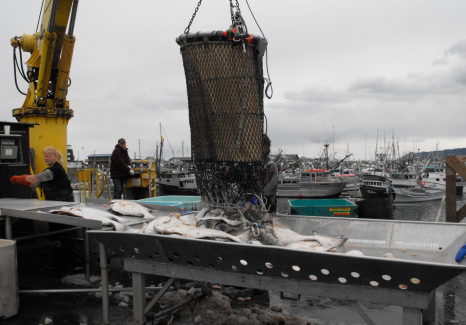
Halibut surplus and competition on East Coast drives dock prices down
Halibut prices have fallen about $2 per pound, and decreasing demand has left plenty sitting in the freezer from last year. Billy Sullivan owns a small fish-buying operation in Homer, and he said years of historically high prices – about $20 to $30 per pound at your typical supermarket – have driven consumers away from purchasing Pacific halibut.,, Consumers are reluctant to buy expensive fillets in grocery stores and restaurants. A new competitor also is taking over a large portion of the market. “They went and found alternatives to expensive halibut and the East Coast fish fills in,” Sullivan said. >click to read<12:18
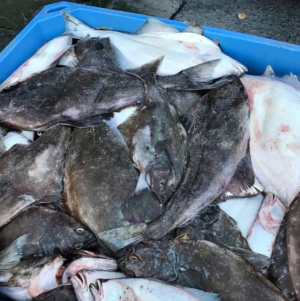
Halibut trash
Only in Alaska, which likes to claim title to the world’s “best-managed fisheries,” would halibut now retailing at prices in excess of $20 per pound be ground into fish meal to feed animals, shrimp and maybe even farmed salmon – the bane of Alaska commercial fishermen. Photos of halibut and other, trawl-caught bottomfish headed for the grinder emerged from Kodiak this weekend as Alaska fishermen started into a fishing season where the targeted harvest of halibut by both commercial fishermen and anglers has been seriously restricted because of conservation concerns. >click to read<18:20

Halibut quotas for 2018 come in slightly lower than expected
The total allowable catch for the 2018 Pacific halibut season in the Gulf of Alaska and Southeast will be set slightly lower than what U.S. commissioners on the International Pacific Halibut Commission had asked for. The National Oceanic and Atmospheric Administration will publish a final rule in the Federal Register Tuesday setting combined charter and commercial quotas in Southeast, area 2C, at 4.4 million pounds. That’s about a 17-percent drop from the total allowable catch in 2017. >click to read<17:39

Homer halibut fishermen facing more competition from the East Coast
The International Halibut Commission, or the IPHC, will kick off its annual meeting in Portland Monday. The international regulatory body is expected to slash the total allowable catch of halibut on the West Coast by 24 percent due to declining stocks. With potentially less Pacific halibut on the market, prices are likely to increase, but a new direct competitor on the East Coast may hamper the market’s ability to compensate for lower halibut stocks in Alaska. >click here to read< 16:33
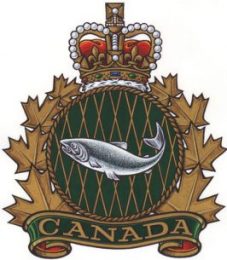
Inshore harvesters voice concerns at DFO outreach meeting in Marystown
The Department of Fisheries and Oceans (DFO) was in Marystown Nov. 21 for one of their series of outreach sessions for inshore fish harvesters in the province. The meeting gave fishers a chance to voice some of their concerns on issues affecting the fishery, and offer their ideas for solutions on some of those issues. Cod allocation was a hot topic among harvesters who gathered at the Marystown Hotel and Convention Centre. click here to read the story 19:19
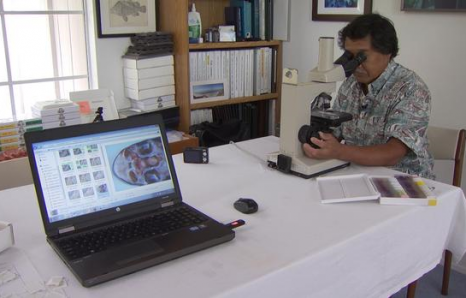
Thousands of Sharks, Other Sea Life Mysteriously Die in San Francisco Bay, State Says No Funding Available to Determine Cause
As many as 2,000 leopard sharks have mysteriously died in the San Francisco Bay over the past few months. The California Department of Fish and Wildlife says determining the cause is not a priority for the state since the sharks are not threatened or endangered, however, scientists say additional research and resources are crucial since the threat is now believed to be preying on other marine life. “This pathogen can tackle a variety of different species … we’ve had a much more diverse group of fish that have been found dead in the San Francisco Bay.” At least 500 bat rays, hundreds of striped bass, 50 smooth-hound sharks and about 100 halibut died in the bay between February and July, according to Okihiro’s estimates. Video, click here to read the story 09:24
Fisherman passing on enterprise to his son, but with an uncertain future
 For the Dobbins, fishing is the family business, and Fintan Dobbin and his son Robert have been a team for years. While Fintan is preparing to retire from the industry and sell off his over 40-fleet to Robert, he has doubt if there is much of a business he’s leaving behind for his son. “I’m about to sign it over to him now, but I don’t know what he’ll do with it,” Fintan said. This uncertainty was not always the story. There was a time when the Dobbin’s enterprise was a successful operation, largely due to the fishing of halibut in the 4R region. “We made our living at the halibut, we put our lifetime into it,” Fintan said. “Until they took it all away from us.” click here to read the story 22:57
For the Dobbins, fishing is the family business, and Fintan Dobbin and his son Robert have been a team for years. While Fintan is preparing to retire from the industry and sell off his over 40-fleet to Robert, he has doubt if there is much of a business he’s leaving behind for his son. “I’m about to sign it over to him now, but I don’t know what he’ll do with it,” Fintan said. This uncertainty was not always the story. There was a time when the Dobbin’s enterprise was a successful operation, largely due to the fishing of halibut in the 4R region. “We made our living at the halibut, we put our lifetime into it,” Fintan said. “Until they took it all away from us.” click here to read the story 22:57
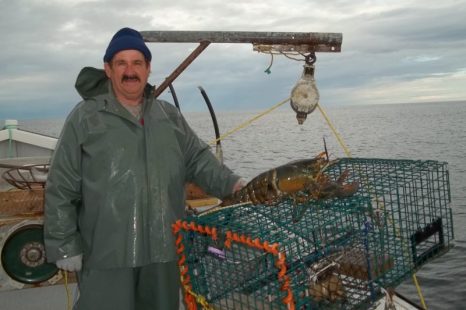
4R Harvesters want higher halibut quota
Harvesters in the 4R fishing zone may be seeing plenty of halibut this year, but it’s all getting thrown back into the water. Now, they want a larger quota. Some fisherpersons – including Ernest Decker of Rocky Harbour and Stella Mailman of Port au Choix – claim they’re seeing increased volumes of halibut by-catch. They feel, instead of having to release the fish, the quota – currently set at 1,297 pounds per harvester – can be increased substantially without damaging the stocks. Decker says no matter what you’re fishing in 4R – located from Port aux Basques to the Labrador Straits – you’re bound to get a substantial by-catch.,, Mailman believes the quota can be doubled. “They can come in from the Magdalen Islands and have a 12-hour free-for-all, catch 1,400, 1,600, 1,800 pounds,” she said. “But we’re allowed 1,250 pound? Come on, there’s something wrong with that picture. click here to read the story 16:07






